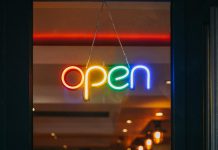A year of COVID-19 limbo has turned the notion of self-care into a mainstream pursuit. After all, with the pandemic’s end on the distant horizon, we all just need to hang in there a little longer—even CEOs.
Earlier this month, we looked at the worries occupying the minds of 10 CEOs we reached out to in July and December. Now, we’ll look at what they have been doing to cope with the circumstances. Forced to stop and rethink every aspect of their businesses from the morning commute to the mission statement, these inspiring CEOs have also been prioritizing their physical and psychological health by:
Adopting new routines and rituals. The foundation of CEOs’ self-care was to replace the “lost structure” of the workday. One shared that “a daily routine for myself and supporting the family took longer to create and to put in place than expected. But once it was there, it provided perceived control over the whole thing.”
Another interviewee reported that coming up with a daily plan “took some time,” and all agreed that being “diligent” about daily routines was crucial. Some executives noted that the schedule helped “compartmentalize” personal and professional activities. “Rituals to start and end [my] ‘workday’” or to facilitate the “switch between work and home” were popular.
Exercising and meditating consistently. Exercise was one of the most frequently mentioned activities, with several interviewees noting that they stepped up their pre-pandemic workout regimen (and, in one case, “lost the initial ‘COVID-stress’ weight”). CEOs chose a variety of approaches—such as running, walking, yoga, “online Pilates,” or using newly bought “home gym equipment”—but almost all of them said they worked out regularly. Clearly, exercise provided not only physical benefits but an additional element of structure and control during an uncertain time.
The fact that many of the types of exercises mentioned were repetitive and contemplative in nature suggests that this may have been a quality the CEOs sought out, consciously or not. No one mentioned foot or bike racing, punching-bag work, or any other competitive or aggressive physical activity. This aligns with the fact that half of the sample considered daily meditation or prayer a crucial grounding element of their self-care.
Connecting socially, safely. Nearly all CEOs mentioned that spending time with family “helps release the stress” and “kept me mentally healthy and strong.” Some also noted that they were managing their social lives more proactively, making more concerted efforts to reach out to loved ones. “I called elderly family members regularly and checked on them and their mental health,” one said, while another noted that he had “reconnected with people I had not been in touch with [for] a while.”
“EVERY WEEK, I WROTE MYSELF ONE EMAIL ABOUT WHAT I ACCOMPLISHED PERSONALLY AND PROFESSIONALLY.”
Friends and colleagues were also a source of support. One CEO said that “communication about what other people are doing and how they are coping … made me realize I am not in bad shape.” Another made a habit of “talk[ing] to at least one friend a day to vent—[the] main objective was not to help each other, but to hear each other out.”
Developing resilience and using cognitive restructuring. Several interviewees “worked on self-development,” taking the pandemic as an opportunity to foster their resilience and learn new skills. “I believe that whatever does not kill you makes you stronger. This perception helped,” one CEO noted.
Reading, webinars, podcasts, home improvement projects, and cooking were all popular with our sample. Such activities “made me feel empowered once I completed the tasks,” in the words of one CEO, and “helped me to feel that I was not wasting my time and helped me to not be too hard on myself,” according to another.
These activities went beyond mere distractions: They helped leaders focus on the future. One interviewee described how, “Every week, I wrote myself one email about what I accomplished personally and professionally that week—to reflect on the week and assess what I want to continue doing and what I would like to change.” Another appreciated having occasional time to “reflect on what I liked and wanted to keep after the pandemic.”
Developing a daily cadence and mental stamina. Interviewees were nearly unanimous on the need to monitor themselves on an ongoing basis—“to pace myself not to get overwhelmed and risk getting sick,” one said. Others spoke of “trying not to be too hard on myself and realizing there is only so much I can do,” “taking it one day at a time,” and “learning to be more flexible and less bound by plans, learning to let go.”
Several noted the need to “take short breaks throughout the day not to burn out” or allow downtime in order to “let myself absorb the situation.”
Will 2020 habits stick in 2021?
At the end of 2020, we reached out to our sample again, asking if and how their coping mechanisms have evolved since July. Eight of the 10 provided updates:
- Two CEOs said that they were exercising less than at the beginning, one not at all. One reported a relatively unchanged workout regimen, while the other five had increased their exercise, two of them working out with personal trainers multiple times a week.
- Those who initially reported meditating, with one exception, had continued or increased their practice.
- Above all, they all kept the practices in place that helped them control what could be controlled—exercise, diet, personal habits, and routines.
None of these CEOs reported increased stress in the second half of the year. Three reported a decrease, while another three said they were holding steady. After a tough year, many CEOs surmised that they were simply acclimating to the stress and uncertainty of the pandemic.
A mission or malaise?
The contrasting responses of the remaining two CEOs highlight the disconnect between circumstances and emotional reaction, and the importance of framing. One CEO felt less subjective stress, although his responsibilities had increased as he navigated the logistics “to get back to normal, and to re-employ many people whom we had to furlough.”
A second acknowledged that anxiety about his business had declined, but malaise had set in. “Recharging and recovering to be strong for others has been taking longer and longer (more off days, more zombie TV watching and internet browsing, and feeling too fatigued to exercise). Weather does not help as gray, dark, and colder days increase.” His employees, likewise, “seem to feel this fatigue rising.”
Stress can cause people (or any other organism) to become more resilient, or it can have the opposite effect, wearing down and depleting their physical and mental resources. The outcome depends on many factors: Whether the stress was chosen or involuntary, meaningful or random, sudden or gradual, severe or mild, the individual’s level of social support and experience or training. Feelings of agency, self-efficacy, and clarity about the circumstances—understanding the duration and likely resolution of the crisis—also matter. Think of the difference between boot camp and combat.
“I DEFINITELY SPEND MORE TIME REFLECTING THAN PRE-COVID. I AM MORE DISCIPLINED IN SOME AREAS BUT ALSO MORE RELAXED WHEN THINGS DON’T WORK OUT.”
Seen in this light, the first CEO’s response made sense. Though busier than ever and no longer able to enjoy as much time for exercise, he had clear and positive goals to work toward: reuniting and re-employing people. These goals aligned with his team’s personal interest, which meant that he enjoyed goodwill and cooperation. He didn’t have to expend psychological energy rallying the troops, quelling dissent, or grappling with the guilt of inflicting further pain on struggling workers.
This also was the same respondent who described the early days of the pandemic as a blur of focused action, an “intense period of quick thinking, innovation, communication, implementation … trial and error,” suggesting that his self-efficacy had been high from the beginning of the pandemic, with failure understood as a valuable learning experience.
The second CEO, by contrast, described performing a great deal of emotional labor while attempting to keep the business in stasis—exhausting tasks with no clear milestones. No wonder he felt depleted even though the reasons for his anxiety “intellectually seem less.”
Originally published by
Gamze D. Yucaoglu, Robin Abrahams, and Boris Groysberg | February 17, 2021
Harvard Business School













